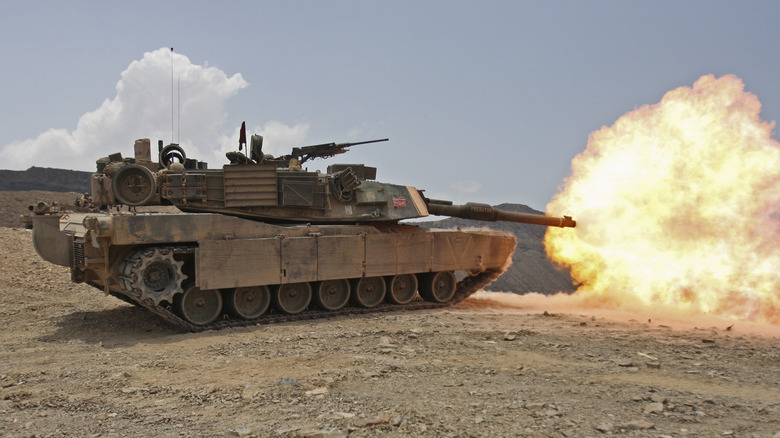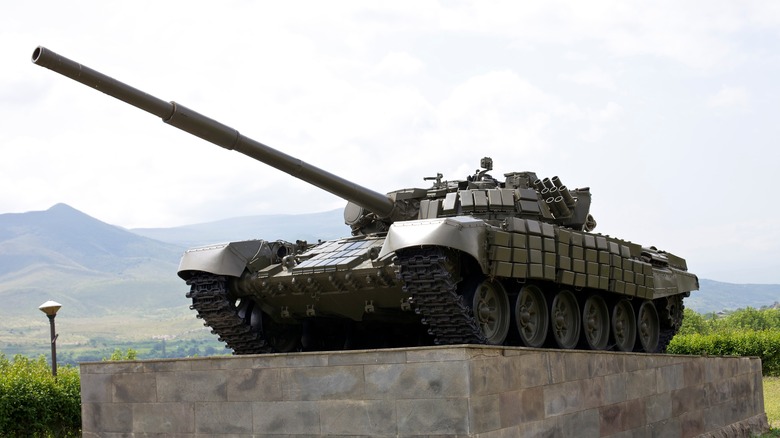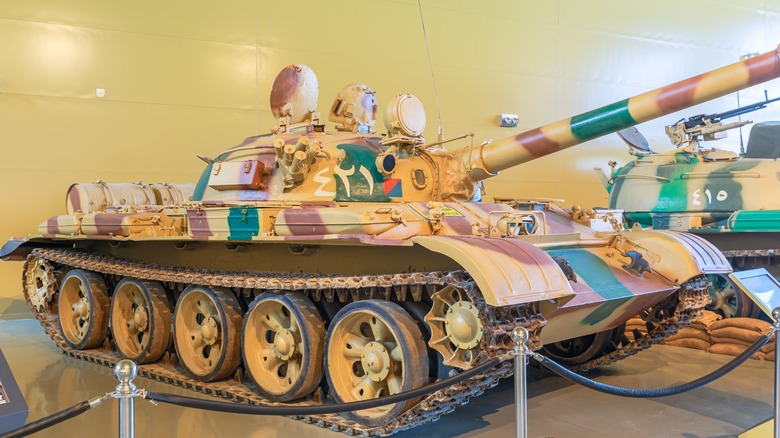Which Tanks Were Used In Desert Storm's Violent Battle Of 73 Easting?
February 1991's Battle of 73 Easting took place in the last days of the Gulf War, which came about as a result of the international response to Iraq's invasion of Kuwait the previous year. The United States spearheaded a coalition of nations and instigated Operation Desert Shield. This military action initially saw almost a quarter of a million U.S. troops dispatched to Saudi Arabia, expanding to more than half a million coalition troops by the time a UN Security Council resolution for Iraq's withdrawal from Kuwait was defied in January 1991.
The Coalition's response was a two-stage offensive known as Operation Desert Storm. It began with an aerial campaign on January 17 that year (two days after the deadline), which lasted until February 24. Coalition forces claimed control of the air, allowing them to target key Iraqi installations and eradicate almost one-third of the tanks and armored vehicles available to Iraqi forces. A ground-based assault then began.
February 26's Battle of 73 Easting was part of that, and was named for a stretch of desert 73 kilometers to the east of a dividing line used to establish a position in an area that was otherwise difficult for troops to orient themselves in. In this battle — one of a series that took place in short order — Iraq's forces were equipped with T-62 and T-72 tanks, as well as T-55s. These Soviet models were up against the legendary M1A1 Abrams, one of the best tanks ever made. The United States also had the benefit of the M2 Bradley Fighting Vehicle, while the Iraqi forces were bolstered by APCs of their own. Numerically, there was a large advantage for the Iraqis, but the circumstances were against them.
Why the Abrams tank had such a big advantage
Master Sgt. Dustin Denney writes in NCO Journal that "Iraqi tanks and armored personnel carriers heavily outnumbered Eagle Troop, Second Squadron, Second Armored Cavalry Regiment (ACR) as the two forces met." The Coalition fielded between 200 and 300 vehicles, while Iraq had approximately 300 to 400. Upper estimates for infantry put have 4,000 coalition troops against 3,000 Iraqis.
A numerical advantage is not necessarily a decisive factor in a battle, however. The coalition forces had been through a long and thorough period of training prior to the engagement, and in contrast, the Iraqi gunners were unprepared and inaccurate, with poorly maintained tanks, many of which were inoperative. Iraq's forces were also caught on the back foot, with several personnel not in position at the time of the battle beginning because Coalition strikes on the area had driven them out of the tanks they crewed.
Even if everything had been in working order and Iraq's forces were as prepared as those of the Coalition, the Abrams tank itself represented a huge advantage for the latter. It was far more versatile than the tanks it faced, capable of firing while moving, and more heavily armored. The US forces had an enormous technical advantage, and the Iraqi tanks didn't have the same versatility at range. Several attacks aimed at the Coalition's armored vehicles simply fell short of their targets. The Republican Guard were the best-equipped and most formidable of Iraq's forces, but at 73 Easting, they were consumed by this overwhelming combination of factors. This would continue to be the case, and ultimately lead to the war's swift end and Coalition victory.
The course of the battle and other tank encounters in the war
What the Coalition did so effectively was utilize the element of surprise that the Abram's range offered. Lieutenant General H.R. McMaster, who served in the battle as then-commander of Eagle Troop, told the American Veterans Center that his forces had been advancing and neutralizing barracks buildings as they did so. "We got a bit of a jump on them because ... their turrets there were overlooking the explosions ... in the barracks we had fired on."
It took just 23 minutes for McMaster to devastate half of the forces that Iraq fielded. The maneuverability of the Abrams was a big contributor to this success, allowing McMaster to make the strategic call to advance further than the limit of command to press the attack. It also allowed tankers to negotiate a minefield and achieve a 45-degree angle position, thereby targeting the entrenched positions of the Iraqi armor from a more protected spot. The top-tier engineering of the M1 Abrams family was in full effect here.
Not a single U.S. tank was lost. An M2 Bradley was destroyed in the battle, and 25 personnel were killed or wounded, while Iraq's casualties numbered as many as 1,000, and 180 APCs and 160 tanks of their tanks were destroyed. The following day, at the Battle of Medina Ridge, the war's biggest tank battle took place. The Coalition was able turn to the tables on an ambush Iraqi forces had planned, in what National Geographic describes as "a 40-minute slugfest ... involving some 3,000 vehicles, including 348 M1A1 tanks." The war ended the next day. The mighty M1 Abrams has it weaknesses, but is a dominant force nonetheless.


